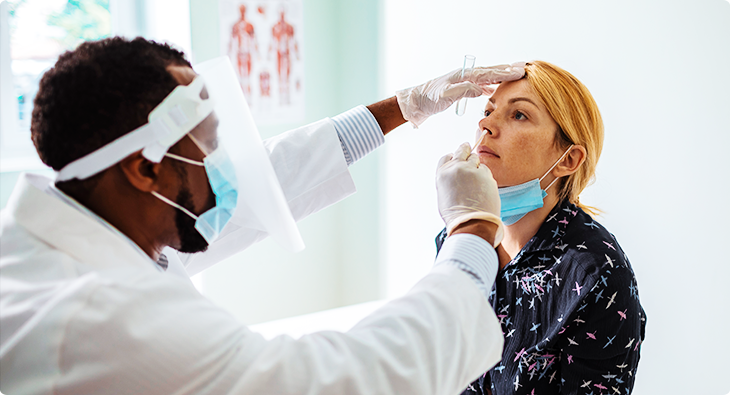Crucial Guidance for Testing and Treating COVID-19 Patients: How the IDSA is Putting Patients and Healthcare Workers First
Frequent updates and detailed recommendations continue to shape the healthcare community’s efforts
The COVID-19 pandemic spread as quickly as it appeared and continues to overwhelm communities across the globe. Clinicians, scientists, and researchers all over the world have pivoted to tackle the outbreak on multiple fronts: implementing safety and testing protocols to mitigate its spread, investigating the mechanisms of disease induction, and developing vaccines and potential therapeutics. Now, nearly a year after the pandemic was declared, it is still unclear what the full scope of the outbreak’s impact will be.
Throughout this time, the Infectious Diseases Society of America (IDSA) has worked hard to provide guidance for clinicians who are testing and treating patients, and continues to update this guidance as new information emerges. Their advice has been crucial for implementing the most effective treatment strategies, particularly with so many hospitals around the world testing different therapies and reporting their successes and failures.
Evolving treatment guidelines allow clinicians to deliver the best care possible
As the pandemic has progressed, research and medical approaches have rapidly evolved, shifting our understanding of how various therapies work for multiple levels of illness severity. The IDSA’s treatment recommendations are listed in a table that provides specific guidance on various therapies, along with a graded level of certainty for each recommendation based on clinical evidence. While the table itself continues to be updated as new data emerges, the IDSA also provided more general recommendations:
- Universal access to accurate SARS-CoV-2 nucleic acid testing is critical.
- Test all symptomatic individuals suspected of having COVID-19.
- Test asymptomatic individuals with known or suspected exposure to COVID-19.
- Test asymptomatic individuals when the results affect quarantine or PPE usage decisions, prior to surgery, or when results may affect the success of other therapies.
More specific diagnostic testing recommendations have also been kept up-to-date as the outbreak has evolved. “Molecular diagnostic testing has played a critical role in the global response to the COVID-19 pandemic,” IDSA authors state. As of February 2021, their diagnostic testing guidelines list 17 recommendations and an algorithm to help with clinical decision-making. They include both primary and contingency recommendations—the latter of which are used when there is limited availability of key tests, consumables, or PPE.
While we may still be a long way from the end of this outbreak, evidence-backed treatment recommendations give researchers, scientists, and healthcare workers a strong foundation on which we can all build from as we continue to work towards improving the outcomes of people affected by COVID-19.
As a company that has shifted its focus to provide both research and molecular diagnostic tools for those in the lab and on the frontlines fighting the pandemic, the entire Luminex team is grateful for the dedicated researchers who support the IDSA’s commitment to delivering guidance for clinical best practices.
Because we’re committed to supporting our partners, customers, and the patients they serve through this pandemic, we’ve developed a number of COVID-19 testing solutions to help labs obtain reliable, timely, and accurate results. Check out our website for more information.
Related Content:
- Luminex Diagnostic COVID-19 Offerings [Webpage]
- ® System to Respond to the COVID-19 Pandemic” href=”/blog/lessons-from-the-frontlines-how-a-louisville-lab-used-the-aries-system-to-respond-to-the-covid-19-pandemic/”>Lessons from the Frontlines: How a Louisville Lab Used the ARIES® System to Respond to the COVID-19 Pandemic [Blog]
- How Luminex Is Supporting Research Partners’ Pandemic Response [Blog]


